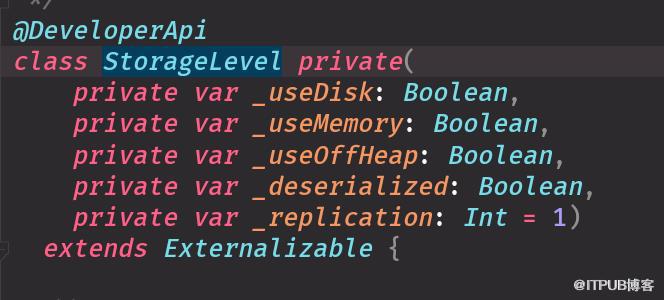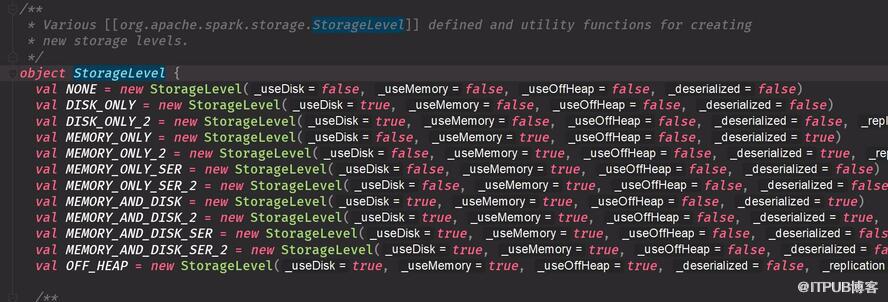本篇文章为大家展示了怎么解析spark的宽窄依赖和持久化,内容简明扼要并且容易理解,绝对能使你眼前一亮,通过这篇文章的详细介绍希望你能有所收获。
一.持久化官网
1.官网位置截图
2.cache 源码
cache底层调用的是persisit ,默认参数是StorageLevel.MEMORY_ONLY cache 用完最好手动干掉
3.StorageLevel源码
4.StorageLevel 解释
是否使用磁盘 是否使用内存 不管 反序列化 副本
5.persisit 可以传的参数
6.官网:怎么选择缓存?
7.上图解释
选择默认第一种MEMORY_ONLY 内存不够选怎序列化 磁盘最好别选择 不要用这个副本形式耗内存 缓存选择: Spark’s storage levels are meant to provide different trade-offs (权衡)between memory usage and CPU efficiency.We recommend going through the following process to select one: 选择方式 优先级从上到下 优先选择第一个MEMORY_ONLY ,内存实在不够就序列化 If your RDDs fit comfortably with the default storage level (MEMORY_ONLY), leave them that way 默认可以搞定就用默认的. This is the most CPU-efficient option, allowing operations on the RDDs to run as fast as possible. 不要选择java的序列化 If not, try using MEMORY_ONLY_SER and selecting a fast serialization library to make the objects much more space-efficient 空间很好, but still reasonably fast to access. (Java and Scala) Don’t spill to disk 不要放到磁盘 unless the functions that computed your datasets are expensive, or they filter a large amount of the data. Otherwise, recomputing a partition may be as fast as reading it from disk.
二.宽窄依赖,血缘关系
1.总结
宽依赖用shufer 宽窄依赖容错程度不一样 一个shuffer产生两个stage,两个产生三个stage等等 Lineage 血缘关系 用于容错很多都是记录的 textfile =》 xx => yy 描述的是一个RDD如何从父RDD过来的 RDD作用一个函数就是对RDD里面的分区作用一个函数 丢失了根据父RDD重新算一下 dependence 宽依赖:一个父RDD的partition至多被子RDD的某个partition使用一次 没shuffer pipline 丢一个就直接拿出来计算就可以 窄依赖:一个父RDD的parttiton会被子RDD的partitio使用多次 有shuffer 宽依赖挂掉了要从父RDD全部计算 有的时候解决数据倾斜需要shuffer 他们容错程度不一样的 有shuffer就会生成stage 总结:老子被儿子用几次,多个孩子(宽)或单个孩子(窄)
2.driver
driver 就是main方法 中创建sparkcontext action 产生job ,shuffer 产生stage ,stage 里是task






